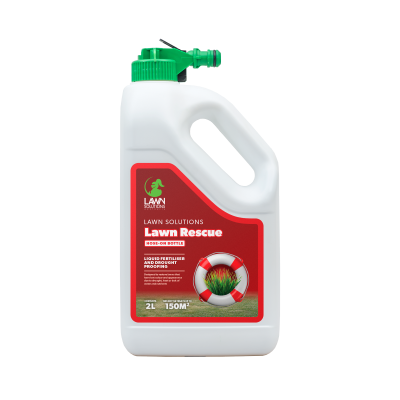- You don’t get many chances to ‘start over’ with a lawn so it’s a great opportunity to get it right
- Think about how you want your new lawn to perform and its main use – variety choice is important
- Consider long-term factors like drainage, shading over time, ongoing maintenance before you start
When it comes to growing turf, it’s just like growing any plant really; a good soil-bed, water, light, nutrients and a bit of maintenance are all required to keep it in good condition. And just like preparing a garden bed, if you can apply similar attention to the quality and depth of your soil then you’ll be way ahead in the long-run. When Turfgrowers are preparing new paddocks for planting of a new turf type, they will go to great lengths to get the soil prepared so it is easier to keep the crop weed-free and productive for a number of years. In most cases it will involve some weed spraying, deep ripping, some cultivation, maybe some levelling and drainage work, soil testing, amelioration with additives (gypsum, lime etc.) and fertilisers and trace elements depending on soil test results. More often-than-not the paddock may be left fallow (not planted) for a number of months to allow any further weed-seeds to germinate and then further weed-spraying, cultivation, possible rolling and even fumigation may take place prior to finally planting the new turf crop.
The work doesn’t stop there of course with pre-emergent herbicide applications, fertilising, irrigation, regular mowing, hand-spot-weeding and other foliar applications taking place before the turf is ready for harvest. Depending on the location and turf-type that could take anywhere between six and eighteen months or thereabouts before the turf is healthy and strong enough to be cut and rolled-up ready for delivery. So with this in mind, consider a similar approach to your new lawn for best long-term results:
- Successful establishment of all lawn types relies on proper soil preparation. Without preparing your soil properly, your lawn can suffer from poor soil drainage, compaction, pH or fertility problems that could have otherwise been simply prevented.
- Removing weeds and debris is important when preparing your soil. One of the best methods for eliminating weeds is using an environmentally-friendly herbicide, such as a non-residual glyphosate herbicide like Roundup.
- Keep drainage and the grade of your lawn area in mind as it should slope enough to allow surface water to drain away from your house yet be gradual enough to allow for easy maintenance and outdoor activities.
- Where steep slopes exist (over 40%) or grades change drastically, consider installing retaining walls or other surface plantings in these areas as mowing and other maintenance may become difficult after you’ve finished.
- It is recommended to strip the top layer of your soil by around 150mm (six inches) and this will ensure the removal of any debris, clay or poor growing medium.
- Beware of areas where mortar or ‘brickies sand’ were stored as they can cause high pH issues in your soil, it’s the last thing you want to happen after getting your turf established.
- When setting up levels, establish and stake or mark out subgrade and topsoil levels, keeping to requirements for any drainage, irrigation and shaping work.
Lawn Solutions Australia has an extensive selection of specifications for lawn establishment and to see further details on preparing your soil, click here



